
04-11-2025 09:07
Hello.A suspected Hymenoscyphus sprouting on a thi

04-11-2025 12:43
 Edvin Johannesen
Edvin Johannesen
Hi! One more found on old Populus tremula log in O

03-11-2025 21:34
 Edvin Johannesen
Edvin Johannesen
These tiny (0.4-0.5 mm diam.), whitish, short-stip

28-10-2025 15:37
Carl FarmerI'd be grateful for any suggestions for this strik

03-11-2025 16:30
 Hans-Otto Baral
Hans-Otto Baral
Hello I want to ask you if you have found this ye

28-10-2025 19:33
 Nicolas Suberbielle
Nicolas Suberbielle
Bonjour à tous,Je voudrais votre avis sur cette r
 Hi All,
Hi All,On 11th September I was surprised and excited to find an Arpinia in a spruce plantation on Anglesey, North Wales. A description is given below:
Arpinia cf luteola, Cae Brych Forestry, 11/9/23
Ascospores with two guttules. Ellipsoid. Thick-walled.
10.2x6.6, 10.2x6.2, 11x6.4, 11.3x6.2, 10.8x7, 10.6x6.6, 10.1x6.2, 11.2x6.2,
10.2-11.3x6.2x7
Paraphyses mostly slightly bent or curved at apices. Slightly enlarged to about 3/3.5. Filled with guttules.
Fb 19mm, stipe 12mm. Cup shallow, 16x12mm, lobed with an incurved margin. Excipulum slightly paler & with a pink tinge. Becoming markedly pinkish on damage. Markedly furfuraceous. Stipe pale, downy.
Habitat. In litter of Picea.
Excipular warts consisting of thin-walled globose or subglobose cells 20-30 across.
Asci X400: 56x4, 69x4, 97x4, 60x3.7, 61x4, 63x3.6, 63x3.9, 65x3.9, 63x4.1,
140-163X9-10.3
Paul Cannon kindly confirmed the ID of Arpinia as a new genus to Britain and also sent me Hohnemeyer's 1988 keys key file:///C:/Users/User/Downloads/Hohmeyer%20(1988)%20Arpinia%20(1).pdf
I am a bit torn between microspora, which has a similar spore width, and luteola var. pallidorosea which has narrower spores than my collection (5-6) but agrees in every other respect with A. luteola var. pallidorosea. We were both wondering if anyone in the forum has more experience with these elusive taxa. I intend to have the material sequenced.
Best wishes,
Charles.


I am not anywhere near an expert in this genus but found this research article from Anatolian J. of Botony by Y. Uzum. Have you seen this? It suggests A. microspora has not been found in Europe and differs from A. luteola by a whitish hymenia. Measurements look all acceptable except a very marginally difference on the width for A. luteola.
See what you think if not seen this article.
See you in Scarborough ... !!
Tony


Many thanks for your comments and info. Yes, it is close to luteola apart from the slight niggle re spore width. The material has been dried and I definitely intend to have it sequenced so maybe that will shed a bit more light on this.
Best wshes,
Charles.

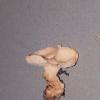
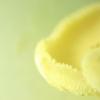
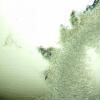
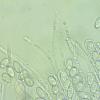
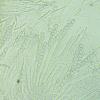
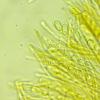
 YUzum-10.30616-ajb.1335980-3300872-0001.pdf
YUzum-10.30616-ajb.1335980-3300872-0001.pdf